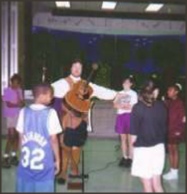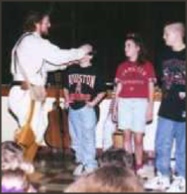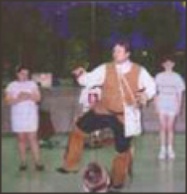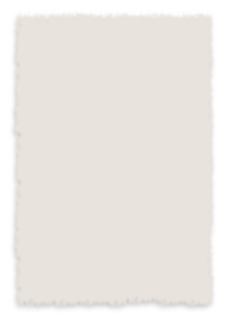Design your own Artistic Residency
Are you interested in an artistic residency but your monies are limited? Would you like your students to have a theatrical experience? I invite you to consider my residency for your school.
This Residency Concept is simple. Your students will research, write and perform plays.
Students will research local history. Based upon their research, I will help them write original plays. When completed, we will practice and perform the plays for your community.
Target Grade Level: 4th and above
I have created performances for students as young as second grade, but I don't recommend it. I would recommend this residency for fourth grade and above. Fourth graders should be able to write a short research paper and they study local history. I would recommend 7th grade or above for the student written plays.
Residency Goals --learning history through the arts
1. To teach local history.
2. To create permanent links with school and local historic resources and encourage students to visit local and regional sites.
3. To forge links of understanding American history through local experiences.
4. To study and experience forms of artistic expression including acting, music, dance and painting.
5. To understand the difference between oral and written history and to experience that difference in presentation.
6. To encourage further research and growth in history and the arts.
Residency Cost
Cost ranges from $1,500 to $3,000 or more, but is negotiable. Ask about available grants.
Each residency is based upon your schools goals and needs. Cost is negotiated based upon the amount of work, distance and budgets. Each step of the residency is adjusted to fit your resources. The final production can be performed on your cafeteria stage or at your local performance center. It can include cardboard box houses or rented sets. I have produced shows without stages or on major professional stages. It is important to remember that the goal of the residency is not to produce Broadway plays. It is to create a wonderful theatrical experience for the students as they learn their local history.
Who can Participate?
The number of students or grade levels varies with each school's involvement but I usually can work with about 25 students per play and can create up to four plays per residency. Several grade levels or even the whole school can be involved Each play averages 10 - 12 minutes in length. It is not practical to write plays with more than 15 speaking roles so the rest of the students can be involved in choirs, dances or technical support staff. Every student can participate but all can't be stars. The resulting evening's performance can consist of four plays with narration or song in between to create a total performance of about one hour.
How much the rest of the school is involved depends upon your staff. If you have a music teacher who can participate, we can write musicals or include musical numbers between plays. It is a great way to highlight talented musicians who rarely get to showcase their talent. If music is limited, I write plays with no music. Dance can be taught in Phys. Ed. Sets can be created in art class. If you don't have an art teacher, then we stretch paper over moveable chalkboards or refrigerator boxes and create towns and cities that way. I have written reader's theatre with no sets, or we can use slides for background.
Holistic approach to the study of History
It is important to include all the teachers in the planning process. They often want to include portions of the residency in their regular courses of study if they know about it ahead of time. They can teach early American music through Canal songs or through Civil War songs if they know the topic. That way the residency is part of the curriculum, not an add-on. Teachers work hard enough. I try to create residencies that will not add to their full plate.
1. Writing Components can range from simple one-paragraph research papers to complete student-written plays. Students may also create press releases for publicity. All this may be used for portfolios.
2. Social Studies Components are largely local research. Presentations from local historians, conversations with relatives, and library collections of oral history may all be included. Field trips to historic sites are encouraged.
3. Art is a main part of this program. Children will paint the sets and scenery, create props, and design and manufacture posters for PR. Music is included in the form of singing and instrumentals, often in combination with a period dance. They will experience theatre in their acting and expression, as well as in the design and creation of their costumes. Finally, students may videotape the presentation or even create advertisements for it to be shown on a school television station.
Most of these can be a part of regular classes.
Suggested Schedule
The length of the residency varies from seven to nine days over eight to ten weeks. A sample schedule could be the following:
Day one: Meet with teachers and plan the residency. Day one can also include intro performances for students. Day one should be held as far ahead as possible so teachers can include the residency in their planning.
Day two: Meet with students. Discuss resources for research. Students begin research. Allow minimum of two weeks before next visit.
Optional Day if students are expected to write the play then meet to teach play writing. Students are then given a minimum of two weeks to work on their play ideas. The final play will be edited and completed by the artist.
Some grade levels are not ready for play writing. If I write the plays, then I am sent the research papers and I write plays based upon the students' work. Allow two weeks for the play writing section.
Day three: Auditions. Students learn about projection, appearance and oral presentation and all students audition for the play. Allow two weeks for assigning parts, building sets, learning music, etc.
Rehearsals and production: Four days minimum Usually, we begin to rehearse on Monday and perform for the finished play for the Community on Thursday night.
Summary
This type of artistic residency is a great way to teach history using all of your school's resources. It can raise proficiency scores -- especially in history and the arts. It is also a lot of fun and the students create something they will be proud of the rest of their lives. How many of you remember the part you had in the school play? If your budgets are limited, let me know. I have qualified for grants from arts councils and have learned to be very creative when it comes to financing worthwhile projects. I never let facts get in the way of a good story, or the lack of money get in the way of reaching goals and dreams.
Give me a call at 937-766-3880 or email me at bobfordmusic@gmail.com


















































